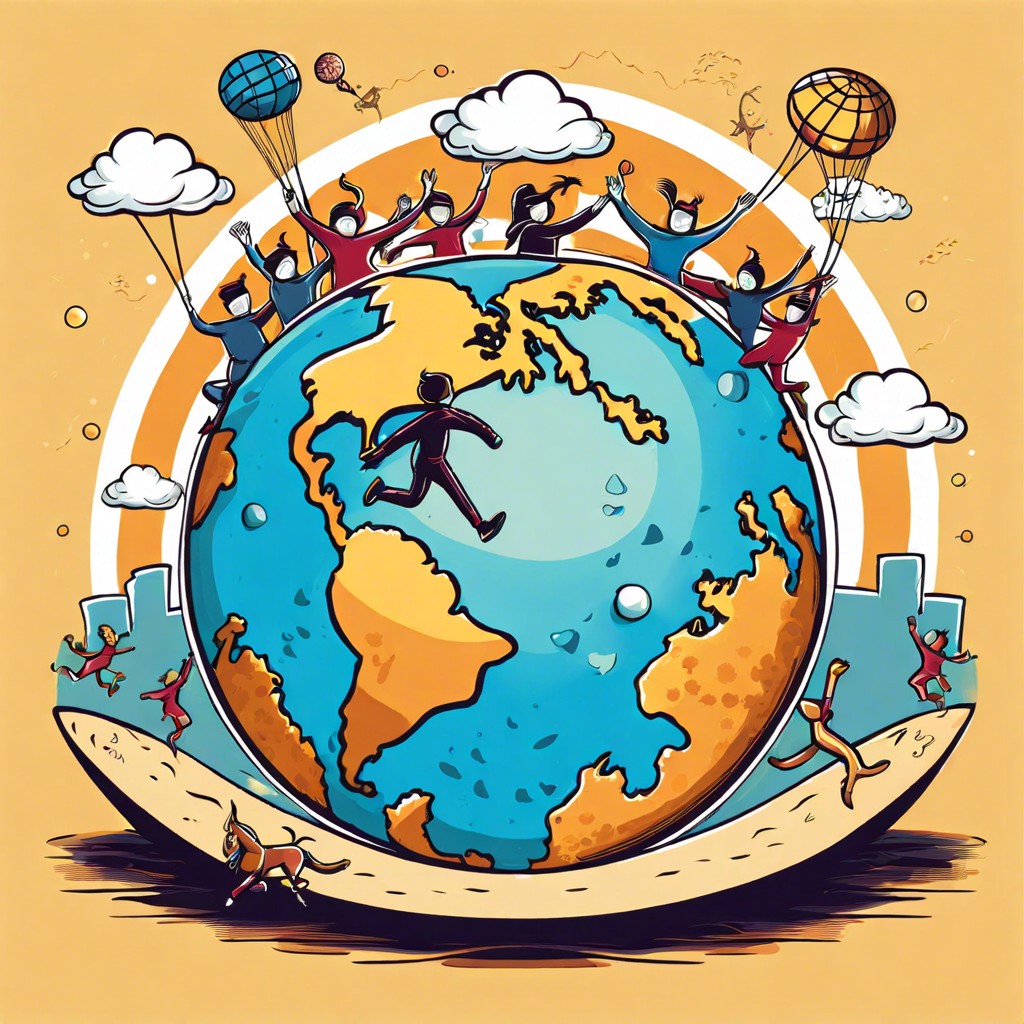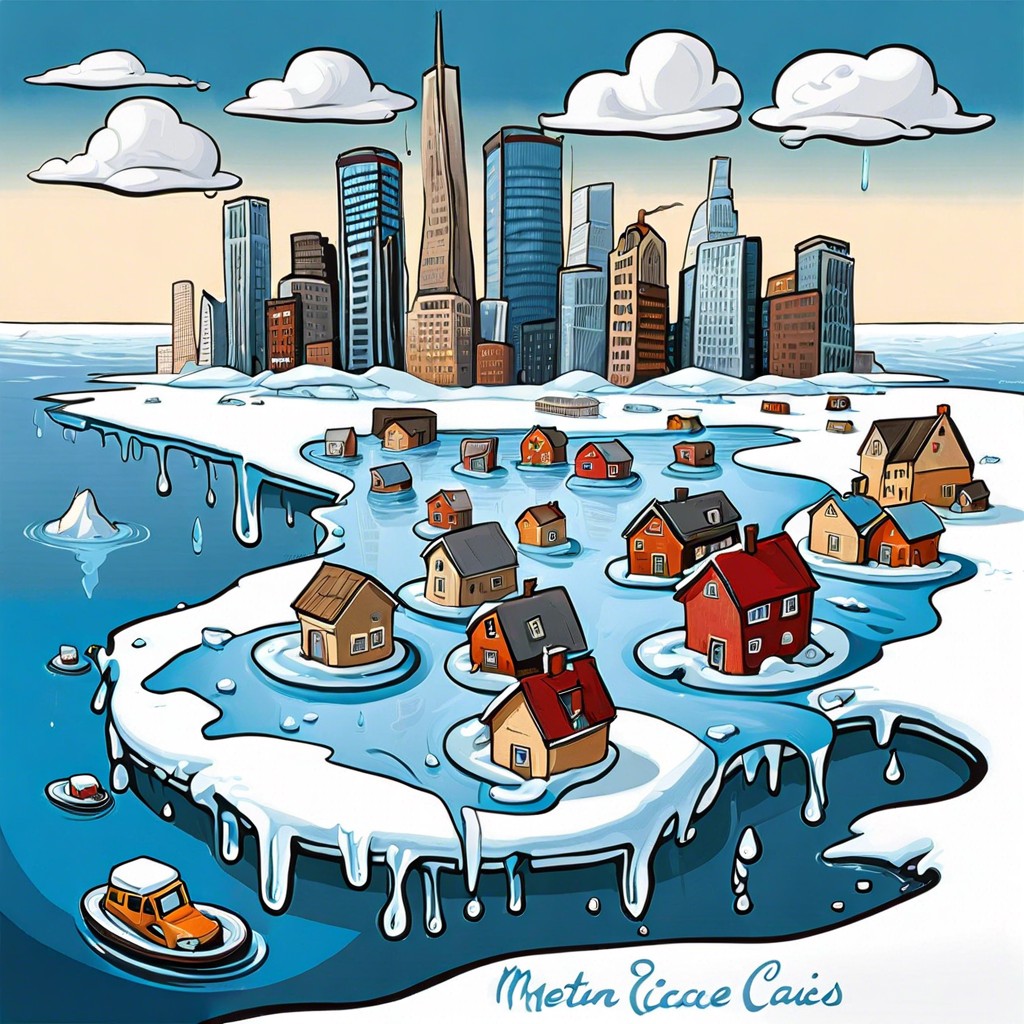Ever wondered what would happen if everyone on Earth jumped at the same time?
Imagine every single person on Earth jumping at precisely the same moment. Sounds like a plot from a sci-fi comedy, right? Well, buckle up! We’re diving headfirst into the chaos that could arise from such a unified leap. From potentially spinning our planet off-course to turning our knees to jelly, there’s a lot more to consider than you’d think. Ever wondered what could happen to the environment, society, or the buildings around you? You’re in for a wild ride! Follow along as we unravel the earth-shaking consequences of this mass airborne event.
Key takeaways:
- Earth’s rotation minimally affected by a collective jump.
- Human bodies could endure minor injuries and increased heart rates.
- Temporary environmental changes like earthquakes and anxious animals.
- Socially, a mix of global unity, coordination challenges, and FOMO.
- Structural concerns for buildings, bridges, and underground systems.
Theoretical Impact On Earth’s Rotation and Orbit

Imagine 7 billion people jumping all at once. Would Earth notice? In one word: not really.
First, Earth’s mass compared to 7 billion humans is like comparing an elephant to a flea. Earth’s sheer size and gravitational heft make it incredibly tough to budge. Any collective jump would be absorbed almost immediately by its vast inertia.
Let’s talk numbers, though. If everyone jumped simultaneously, it could theoretically generate enough force to slightly alter Earth’s rotation. And by “slightly,” think of something on par with a flea’s sneeze disturbing the elephant—it’s there, but negligible.
What about Earth’s orbit? As intriguing as it sounds, it would take far more than our combined little hops to send Earth spiraling off its smooth elliptical path. Any resulting shift would be microscopic, quickly negated by the immense forces already in play, like gravity from the Sun, other planets, and the Moon.
Lastly, if you’re hoping for a “We just jump to fix climate change” scenario, better stick to science fiction. Short, collective jumps won’t reverse global warming or create an instant greenhouse gas vacuum. It’s just a jump, not a miracle cure.
So, while the spectacle might be fun and make for one massive, synchronized selfie moment, Mother Earth would just shrug it off.
Consequences for Human Physiology and Health
Imagine billions of people landing simultaneously—an orthopedic nightmare! For most, the synchronized impact wouldn’t result in serious injury, but consider the strain on bones and joints. That sudden jolt could lead to twisted ankles, sore knees, and a spike in chiropractor visits.
Heart rates, too, would skyrocket. A global jump requires global excitement—a cardiovascular rollercoaster. Imagine the adrenaline rush; hearts pounding like they’re trying to win a drumming contest.
Ears would get a workout, too. The combined thud of billions hitting the ground? Deafening. Temporary hearing loss wouldn’t be a surprise, making communication tricky for a while.
Let’s not ignore the psychological stress. The anticipation and the collective action would lead to anxiety for some, joy for others, and sheer elation for thrill-seekers. Global emotional rollercoaster? Easily.
Potential Short-Term Environmental Effects
Imagine the entire population of Earth jumping at the same time. Talk about an instant shake-up! For a brief moment, it might feel like the entire planet has launched its own dance party.
Firstly, it’s plausible we’d experience a mild earthquake. We’re talking an ultra-brief tremor that might knock over a vase or two. Blink, and you’ll miss it. However, given the collective force, some rural areas or older structures could see minor damage.
Water bodies might undergo temporary sloshing. Coastal cities may notice slight tidal waves or splashy surprises. City waterfronts would become impromptu splash zones, so keep the inflatable flamingos ready!
Animals could freak out. Birds might take flight en masse, fish could swim erratically, and your dog might give you a “what the heck?” look. Pet anxiety much?
Lastly, air quality could see a momentary change. Imagine millions of feet displacing air simultaneously; the dust kicked up could lead to a brief smoggy haze. Not the best day for a picnic, huh?
Social and Psychological Implications
Imagine the world’s largest coordinated jump. It’s a social experiment of mind-boggling scale. In the best-case scenario, it might bolster a sense of global unity. Picture billions of humans acting in perfect synchronization. It could be the ultimate team-building exercise, eclipsing any trust fall you’ve ever seen.
However, the logistics could be a nightmare. The stress of coordinating such an event could drive folks batty. The pressure to “not mess up” might induce a wave of mass anxiety. Not to mention, introverts might want to burrow into their quiet corners and flee the frenzy.
Let’s not ignore the power of the collective experience. Bonding over this would be like sharing an inside joke, but with the entire planet. Conversations could suddenly spark around this shared moment, creating new friendships. On the downside, think about the FOMO (fear of missing out). Anyone who snoozed through it? They’d never hear the end of it. The missed jump would become their lifelong regret. Imagine the therapy bills.
The psychological effects wouldn’t stop there. People might suddenly realize their small place in the grand scheme of things, leading to existential musings. Or hilarious memes. Likely both. Either way, it would leave an indelible mark on our social fabric, blending science, silliness, and a bit of social chaos into our daily lives.
Engineering and Structural Considerations
Imagine every person on Earth became an enthusiastic jumper for a day. Chaos, right? But let’s think about the structures beneath our feet.
First off, buildings. Skyscrapers, your home, that coffee shop you love – they all rely on stable ground. A sudden, coordinated jump from billions of people could cause minor tremors. Yes, mini earthquakes! Engineers might need to rethink how we build, possibly making homes as quake-proof as Jell-O molds.
Consider bridges. Our iconic Golden Gate or the humble overpass might experience unexpected stress. If you’re on a massive suspension bridge when the jumping starts, might want to hold on tight.
Lastly, let’s not forget underground systems – like subways and sewer networks. These are designed to handle people moving normally, not launching themselves in unison. We might see some cracks or even subsidence.
In a nutshell, our surroundings aren’t built for synchronized global bouncing. Probably best to leave coordinated jumping to dance floors.




